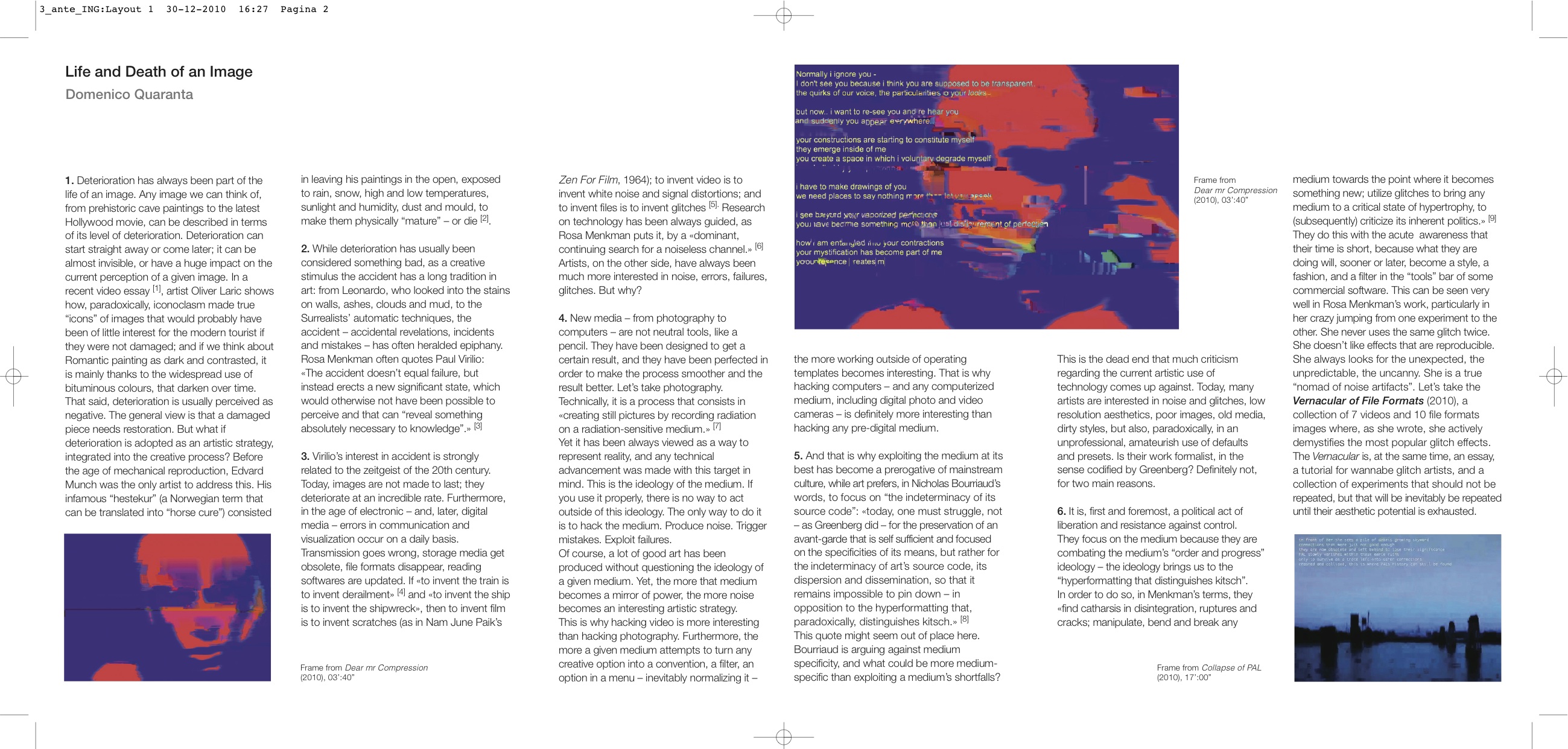

Order and Progress at Fabio Paris Gallery, Brescia, Italy (2011) Order and Progress was my first solo show. There were four works on display:
- The Collapse of PAL
- A Vernacular of File Formats
- Monglot
- Dear mr. Compression.
Domenico Quaranta wrote a complimentary text for it.
︎ Order and Progress catalogue text by Domenico Quaranta
1. Deterioration has always been part of the
life of an image. Any image we can think of,
from prehistoric cave paintings to the latest
Hollywood movie, can be described in terms
of its level of deterioration. Deterioration can
start straight away or come later; it can be
almost invisible, or have a huge impact on the
current perception of a given image. In a
recent video essay [1], artist Oliver Laric shows
how, paradoxically, iconoclasm made true
“icons” of images that would probably have
been of little interest for the modern tourist if
they were not damaged; and if we think about
Romantic painting as dark and contrasted, it
is mainly thanks to the widespread use of
bituminous colours, that darken over time.
That said, deterioration is usually perceived as
negative. The general view is that a damaged
piece needs restoration. But what if
deterioration is adopted as an artistic strategy,
integrated into the creative process?
Before the age of mechanical reproduction, Edvard Munch was the only artist to address this. His infamous “hestekur” (a Norwegian term that can be translated into “horse cure”) consisted in leaving his paintings in the open, exposed to rain, snow, high and low temperatures, sunlight and humidity, dust and mould, to make them physically “mature” – or die.[2]
2. While deterioration has usually been considered something bad, as a creative stimulus the accident has a long tradition in art: from Leonardo, who looked into the stains on walls, ashes, clouds and mud, to the Surrealists’ automatic techniques, the accident – accidental revelations, incidents and mistakes – has often heralded epiphany. Rosa Menkman often quotes Paul Virilio: «The accident doesn’t equal failure, but instead erects a new significant state, which would otherwise not have been possible to perceive and that can “reveal something absolutely necessary to knowledge”.»[3]
3. Virilio’s interest in accident is strongly related to the zeitgeist of the 20th century. Today, images are not made to last; they deteriorate at an incredible rate. Furthermore, in the age of electronic – and, later, digital media – errors in communication and visualization occur on a daily basis. Transmission goes wrong, storage media get obsolete, file formats disappear, reading softwares are updated. If «to invent the train is to invent derailment» [4] and «to invent the ship is to invent the shipwreck», then to invent film is to invent scratches (as in Nam June Paik’s Zen For Film, 1964); to invent video is to invent white noise and signal distortions; and to invent files is to invent glitches [5]. Research on technology has been always guided, as Rosa Menkman puts it, by a «dominant, continuing search for a noiseless channel.» [6] Artists, on the other side, have always been much more interested in noise, errors, failures, glitches. But why?
4. New media – from photography to computers – are not neutral tools, like a pencil. They have been designed to get a certain result, and they have been perfected in order to make the process smoother and the result better. Let’s take photography. Technically, it is a process that consists in «creating still pictures by recording radiation on a radiation-sensitive medium.» [7] Yet it has been always viewed as a way to represent reality, and any technical advancement was made with this target in mind. This is the ideology of the medium. If you use it properly, there is no way to act outside of this ideology. The only way to do it is to hack the medium. Produce noise. Trigger mistakes. Exploit failures. Of course, a lot of good art has been produced without questioning the ideology of a given medium. Yet, the more that medium becomes a mirror of power, the more noise becomes an interesting artistic strategy. This is why hacking video is more interesting than hacking photography. Furthermore, the more a given medium attempts to turn any creative option into a convention, a filter, an option in a menu – inevitably normalizing it – the more working outside of operating templates becomes interesting. That is why hacking computers – and any computerized medium, including digital photo and video cameras – is definitely more interesting than hacking any pre-digital medium.
5. And that is why exploiting the medium at its best has become a prerogative of mainstream culture, while art prefers, in Nicholas Bourriaud’s words, to focus on “the indeterminacy of its source code”: «today, one must struggle, not – as Greenberg did – for the preservation of an avant-garde that is self sufficient and focused on the specificities of its means, but rather for the indeterminacy of art’s source code, its dispersion and dissemination, so that it remains impossible to pin down – in opposition to the hyperformatting that, paradoxically, distinguishes kitsch.» [8] This quote might seem out of place here. Bourriaud is arguing against medium specificity, and what could be more mediumspecific than exploiting a medium’s shortfalls? This is the dead end that much criticism regarding the current artistic use of technology comes up against. Today, many artists are interested in noise and glitches, low resolution aesthetics, poor images, old media, dirty styles, but also, paradoxically, in an unprofessional, amateurish use of defaults and presets. Is their work formalist, in the sense codified by Greenberg? Definitely not, for two main reasons.
6. It is, first and foremost, a political act of liberation and resistance against control. They focus on the medium because they are combating the medium’s “order and progress” ideology – the ideology brings us to the “hyperformatting that distinguishes kitsch”. In order to do so, in Menkman’s terms, they «find catharsis in disintegration, ruptures and cracks; manipulate, bend and break any medium towards the point where it becomes something new; utilize glitches to bring any medium to a critical state of hypertrophy, to (subsequently) criticize its inherent politics.» [9] They do this with the acute awareness that their time is short, because what they are doing will, sooner or later, become a style, a fashion, and a filter in the “tools” bar of some commercial software. This can be seen very well in Rosa Menkman’s work, particularly in her crazy jumping from one experiment to the other. She never uses the same glitch twice. She doesn’t like effects that are reproducible. She always looks for the unexpected, the unpredictable, the uncanny. She is a true “nomad of noise artifacts”. Let’s take the Vernacular of File Formats (2010), a collection of 7 videos and 10 file formats images where, as she wrote, she actively demystifies the most popular glitch effects. The Vernacular is, at the same time, an essay, a tutorial for wannabe glitch artists, and a collection of experiments that should not be repeated, but that will be inevitably be repeated until their aesthetic potential is exhausted.
Before the age of mechanical reproduction, Edvard Munch was the only artist to address this. His infamous “hestekur” (a Norwegian term that can be translated into “horse cure”) consisted in leaving his paintings in the open, exposed to rain, snow, high and low temperatures, sunlight and humidity, dust and mould, to make them physically “mature” – or die.[2]
2. While deterioration has usually been considered something bad, as a creative stimulus the accident has a long tradition in art: from Leonardo, who looked into the stains on walls, ashes, clouds and mud, to the Surrealists’ automatic techniques, the accident – accidental revelations, incidents and mistakes – has often heralded epiphany. Rosa Menkman often quotes Paul Virilio: «The accident doesn’t equal failure, but instead erects a new significant state, which would otherwise not have been possible to perceive and that can “reveal something absolutely necessary to knowledge”.»[3]
3. Virilio’s interest in accident is strongly related to the zeitgeist of the 20th century. Today, images are not made to last; they deteriorate at an incredible rate. Furthermore, in the age of electronic – and, later, digital media – errors in communication and visualization occur on a daily basis. Transmission goes wrong, storage media get obsolete, file formats disappear, reading softwares are updated. If «to invent the train is to invent derailment» [4] and «to invent the ship is to invent the shipwreck», then to invent film is to invent scratches (as in Nam June Paik’s Zen For Film, 1964); to invent video is to invent white noise and signal distortions; and to invent files is to invent glitches [5]. Research on technology has been always guided, as Rosa Menkman puts it, by a «dominant, continuing search for a noiseless channel.» [6] Artists, on the other side, have always been much more interested in noise, errors, failures, glitches. But why?
4. New media – from photography to computers – are not neutral tools, like a pencil. They have been designed to get a certain result, and they have been perfected in order to make the process smoother and the result better. Let’s take photography. Technically, it is a process that consists in «creating still pictures by recording radiation on a radiation-sensitive medium.» [7] Yet it has been always viewed as a way to represent reality, and any technical advancement was made with this target in mind. This is the ideology of the medium. If you use it properly, there is no way to act outside of this ideology. The only way to do it is to hack the medium. Produce noise. Trigger mistakes. Exploit failures. Of course, a lot of good art has been produced without questioning the ideology of a given medium. Yet, the more that medium becomes a mirror of power, the more noise becomes an interesting artistic strategy. This is why hacking video is more interesting than hacking photography. Furthermore, the more a given medium attempts to turn any creative option into a convention, a filter, an option in a menu – inevitably normalizing it – the more working outside of operating templates becomes interesting. That is why hacking computers – and any computerized medium, including digital photo and video cameras – is definitely more interesting than hacking any pre-digital medium.
5. And that is why exploiting the medium at its best has become a prerogative of mainstream culture, while art prefers, in Nicholas Bourriaud’s words, to focus on “the indeterminacy of its source code”: «today, one must struggle, not – as Greenberg did – for the preservation of an avant-garde that is self sufficient and focused on the specificities of its means, but rather for the indeterminacy of art’s source code, its dispersion and dissemination, so that it remains impossible to pin down – in opposition to the hyperformatting that, paradoxically, distinguishes kitsch.» [8] This quote might seem out of place here. Bourriaud is arguing against medium specificity, and what could be more mediumspecific than exploiting a medium’s shortfalls? This is the dead end that much criticism regarding the current artistic use of technology comes up against. Today, many artists are interested in noise and glitches, low resolution aesthetics, poor images, old media, dirty styles, but also, paradoxically, in an unprofessional, amateurish use of defaults and presets. Is their work formalist, in the sense codified by Greenberg? Definitely not, for two main reasons.
6. It is, first and foremost, a political act of liberation and resistance against control. They focus on the medium because they are combating the medium’s “order and progress” ideology – the ideology brings us to the “hyperformatting that distinguishes kitsch”. In order to do so, in Menkman’s terms, they «find catharsis in disintegration, ruptures and cracks; manipulate, bend and break any medium towards the point where it becomes something new; utilize glitches to bring any medium to a critical state of hypertrophy, to (subsequently) criticize its inherent politics.» [9] They do this with the acute awareness that their time is short, because what they are doing will, sooner or later, become a style, a fashion, and a filter in the “tools” bar of some commercial software. This can be seen very well in Rosa Menkman’s work, particularly in her crazy jumping from one experiment to the other. She never uses the same glitch twice. She doesn’t like effects that are reproducible. She always looks for the unexpected, the unpredictable, the uncanny. She is a true “nomad of noise artifacts”. Let’s take the Vernacular of File Formats (2010), a collection of 7 videos and 10 file formats images where, as she wrote, she actively demystifies the most popular glitch effects. The Vernacular is, at the same time, an essay, a tutorial for wannabe glitch artists, and a collection of experiments that should not be repeated, but that will be inevitably be repeated until their aesthetic potential is exhausted.
7. Yet, if it was just that, it wouldn’t be that
interesting. Rosa Menkman’s work and, more
broadly, Glitch Art and the best contemporary
computer-based art is not just an attempt to
liberate a medium and its own languages – it
is also an attempt to use them to say
something that could never be said otherwise.
Let’s look back to the early examples of the
use of deterioration and accidents in art.
Edvard Munch “matured” his paintings
because conventional painting techniques did
not allow him to express the existential drama
he wanted to convey. The Surrealists adopted
automatic techniques such as frottage and
grattage as a means to access the
unconscious. The original shooting of the
Vernacular of File Formats would never have
succeeded in saying what its seventeen
iterations do say. However interesting as an
image, it is the result of a medium under
control. It is just a nice, black and white
picture file where a heavily made-up
Menkman is seen combing her hair (an explicit
reference to Marina Abramovic’s Art Must Be
Beautiful, 1975). It is like AnnLee before she
was bought and shared by Philippe Parreno
and Pierre Huyghe back in 1999: a ghost
image waiting to be rescued from an industry
that had condemned her to death. Similarly,
the flow of data it consists of has been
condemned to be always visualized in the
same way. In his essay “Art in the Age of
Digitalization” [10], Boris Groys claims that
every digital image is a mere copy of an
invisible original – the image file. The image file
is an invisible string of digital data; the digital
image is the way that file is visualized (that is,
performed) in a given context. Introducing a
glitch between the image file and the digital
image, Menkman liberates the latter from its
status of copy of an invisible original.
The same image is now different every time it
is performed. From its birth to its death, it has
many possible lives. It is no longer a copy: it is
the source of many possible originals.
In the Vernacular of File Formats, this story –
actually an illustrated theory – is told with an
extraordinary level of pathos. The woman
portrayed in the picture fades into pixel
blocks, gets grainy, duplicates, disappears
beyond a coloured camouflage, then
reappears, violently slashed.
The same oxymoron – an apparently cold,
geeky theory expressed in a warm, emotional
way - can be found in her video works,
especially Dear Mr Compression (2009) and
Collapse of PAL (2010). In the first work,
Rosa – impersonating Benjamin’s Angel of
History – writes a poem to Mr Compression.
The dialogue appears to take place in a chat
room, and the Angel of History expresses her
feelings while a silent Mr Compression turns
her attempt at communication into an
increasingly corrupted signal. In the latter, the
Angel of History reflects on the PAL signal, its
termination, and its survival “as a trace”
in newer technologies. How poetry can be
composed about such a technical issue is
something we should ask Lucretius or
Raymond Roussel. PAL was the analogue
television encoding system used in Europe,
South Asia and other countries. Whole
generations grew up with it, and got used to
its specific characteristics and glitches.
And Mr Compression is the personification of
a computer process. Do they deserve a
poem? According to the Angel of History,
they do. But Dear Mr Compression is also
the story of a woman talking to a man that
makes her suffer; and the live TV
performance that originated Collapse of PAL
was also, according to Menkman [11], a last
attempt to deliver a message to somebody
getting the PAL signal. Is this mediumspecificity? According to the Angel of History,
it isn’t.
[1] Oliver Laric, Versions, 2009 – 2010. Online at www.oliverlaric.com [2] Trond Aslaksby, “The Weathered Paintings of Edvard Munch. Artist’s intention, conservation, display – a triangle of conflicts”, 1998. Online at www.munch.museum.no/40/6/aslaksby.pdf [3] Sylvere Lotringer, Paul Virilio, The Accident of Art, Semiotext(e), New York 2005, p. 63. [4] James Der Derian, “Is the Author Dead? An Interview with Paul Virilio”, 1997. Online at http://asrudiancenter.wordpress.com/2008/11/26/intervi ew-with-paul-virilio/. [5] «A glitch is a short-lived fault in a system. It is often used to describe a transient fault that corrects itself, and is therefore difficult to troubleshoot. The term is particularly common in the computing and electronics industries». In Wikipedia, http://en.wikipedia.org/wiki/Glitch [6] Rosa Menkman, “Glitch Studies Manifesto”, 2009 – 2010. Online at http://rosamenkman.blogspot.com/2010/02/glitch-studiesmanifesto.html [7] In Wikipedia, http://en.wikipedia.org/wiki/Photography [8] Nicolas Bourriaud, The Radicant, Sternberg Press, New York 2009, p. 138. [9] Rosa Menkman, “Glitch Studies Manifesto”, op. cit. [10] Boris Groys, “From Image to Image File – and Back: Art in the Age of Digitalization”, in B. Groys, Art Power, The MIT Press, Cambridge – London 2008, p. 84. [11] Email to the author, December 16, 2010.
essay by Domenico Quaranta, 2011.
[1] Oliver Laric, Versions, 2009 – 2010. Online at www.oliverlaric.com [2] Trond Aslaksby, “The Weathered Paintings of Edvard Munch. Artist’s intention, conservation, display – a triangle of conflicts”, 1998. Online at www.munch.museum.no/40/6/aslaksby.pdf [3] Sylvere Lotringer, Paul Virilio, The Accident of Art, Semiotext(e), New York 2005, p. 63. [4] James Der Derian, “Is the Author Dead? An Interview with Paul Virilio”, 1997. Online at http://asrudiancenter.wordpress.com/2008/11/26/intervi ew-with-paul-virilio/. [5] «A glitch is a short-lived fault in a system. It is often used to describe a transient fault that corrects itself, and is therefore difficult to troubleshoot. The term is particularly common in the computing and electronics industries». In Wikipedia, http://en.wikipedia.org/wiki/Glitch [6] Rosa Menkman, “Glitch Studies Manifesto”, 2009 – 2010. Online at http://rosamenkman.blogspot.com/2010/02/glitch-studiesmanifesto.html [7] In Wikipedia, http://en.wikipedia.org/wiki/Photography [8] Nicolas Bourriaud, The Radicant, Sternberg Press, New York 2009, p. 138. [9] Rosa Menkman, “Glitch Studies Manifesto”, op. cit. [10] Boris Groys, “From Image to Image File – and Back: Art in the Age of Digitalization”, in B. Groys, Art Power, The MIT Press, Cambridge – London 2008, p. 84. [11] Email to the author, December 16, 2010.
essay by Domenico Quaranta, 2011.
The Collapse of PAL (2010)

A rendered video of a live av-performance first done on national Danish television
subsequently performed at oa. Transmediale (Germany) and Nova festival (Brasil).
In "The Collapse of PAL,” the Angel of History <href: Walter Benjamin> reflects on the signal PAL and its termination. This death sentence, although executed in silence, was a brutally violent act that left PAL disregarded and obsolete. While it might be argued that the PAL signal is dead, it still exists as a trace left upon the new, ‘better’ digital technologies.
PAL can, even though the technology is terminated, be found here as a historical form that newer technologies build upon, in- herit or have appropriated from. Besides this, the Angel also realizes that the new DVB signal that has been chosen over PAL is different, but at the same time also inherently flawed as PAL.
Collapse of PAL is about the loss of connectivity, being forgotten, decalibration.
Chapters: Eulogy, Obsequies and Requiem for the planes of blue phosphor.
☰☰☰☰☰☰☰☰☰☰☰☰☰☰☰☰☰☰☰☰☰
︎ Order and Progress catalogue text by Domenico Quaranta
︎ Collapse of PAL in What is Media Archaeology? by Jussi Parikka
︎ Collapse of PAL in Angelic Ecologies by Sean Cubitt
subsequently performed at oa. Transmediale (Germany) and Nova festival (Brasil).
In "The Collapse of PAL,” the Angel of History <href: Walter Benjamin> reflects on the signal PAL and its termination. This death sentence, although executed in silence, was a brutally violent act that left PAL disregarded and obsolete. While it might be argued that the PAL signal is dead, it still exists as a trace left upon the new, ‘better’ digital technologies.
PAL can, even though the technology is terminated, be found here as a historical form that newer technologies build upon, in- herit or have appropriated from. Besides this, the Angel also realizes that the new DVB signal that has been chosen over PAL is different, but at the same time also inherently flawed as PAL.
Collapse of PAL is about the loss of connectivity, being forgotten, decalibration.
Chapters: Eulogy, Obsequies and Requiem for the planes of blue phosphor.
☰☰☰☰☰☰☰☰☰☰☰☰☰☰☰☰☰☰☰☰☰
︎ Order and Progress catalogue text by Domenico Quaranta
︎ Collapse of PAL in What is Media Archaeology? by Jussi Parikka
︎ Collapse of PAL in Angelic Ecologies by Sean Cubitt
Nova Roja Trailer / Rosa Menkman - Collapse of PAL 2010-2012
Nova Roja Collapse of PAL end when Defi destroys the screens. Below: Live at Xrt 2011.
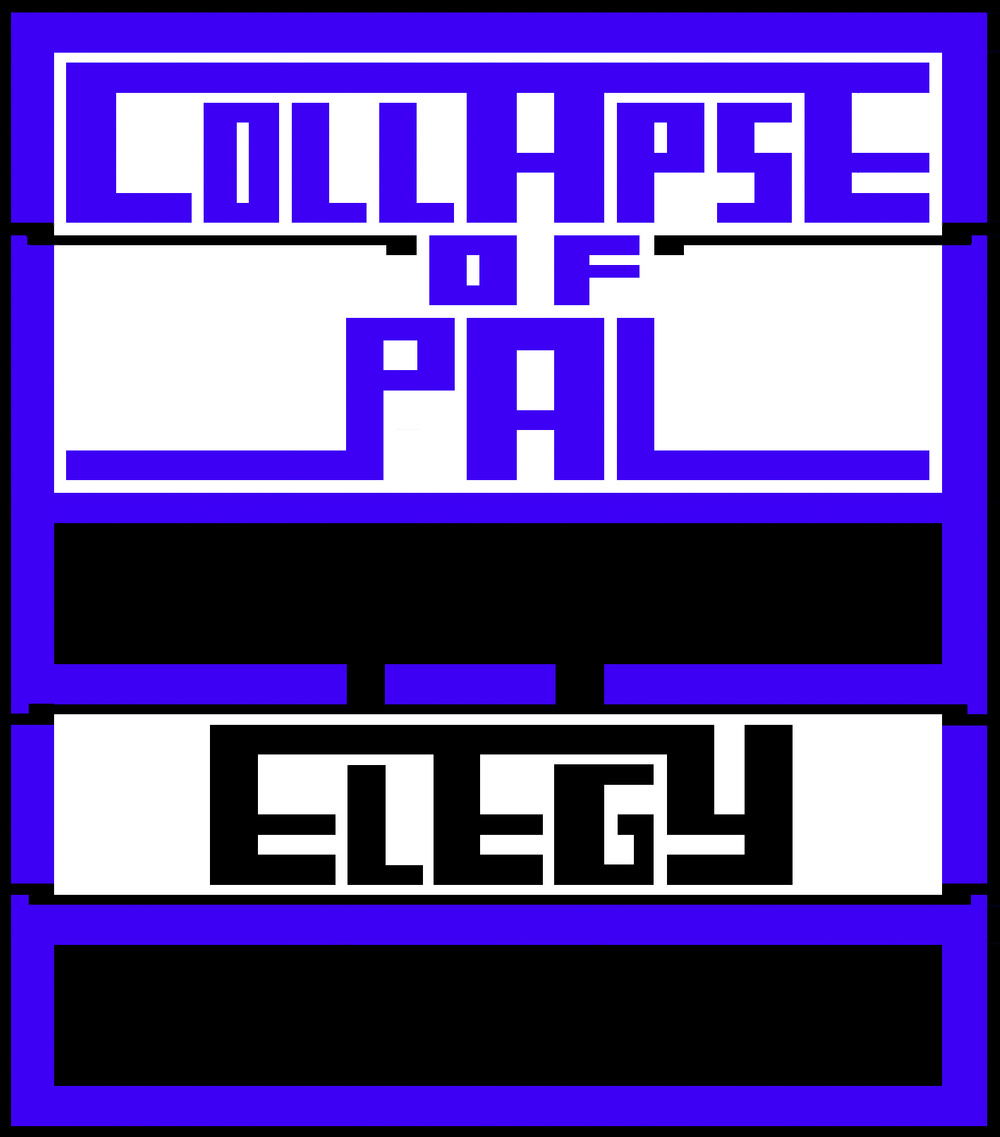
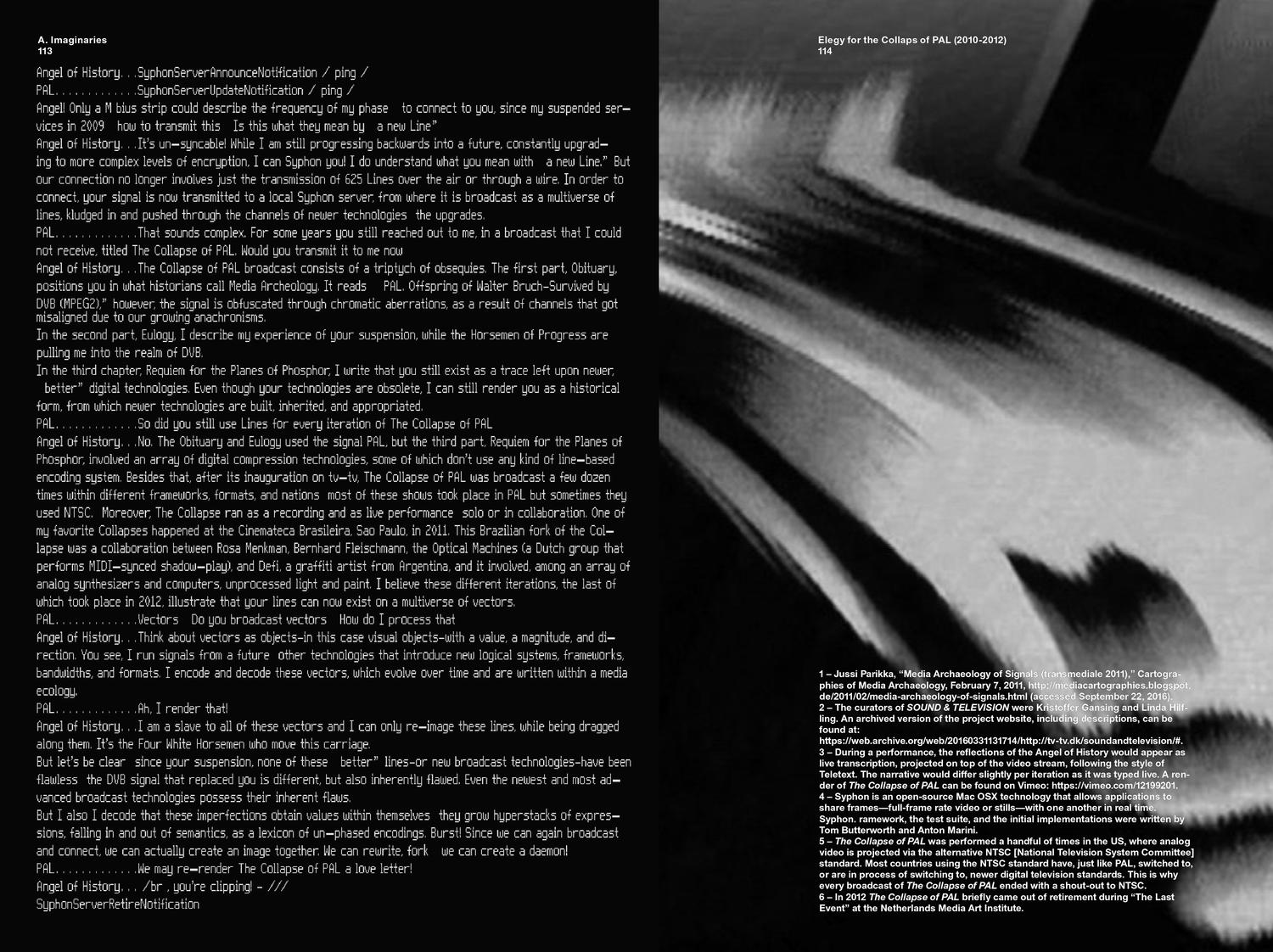
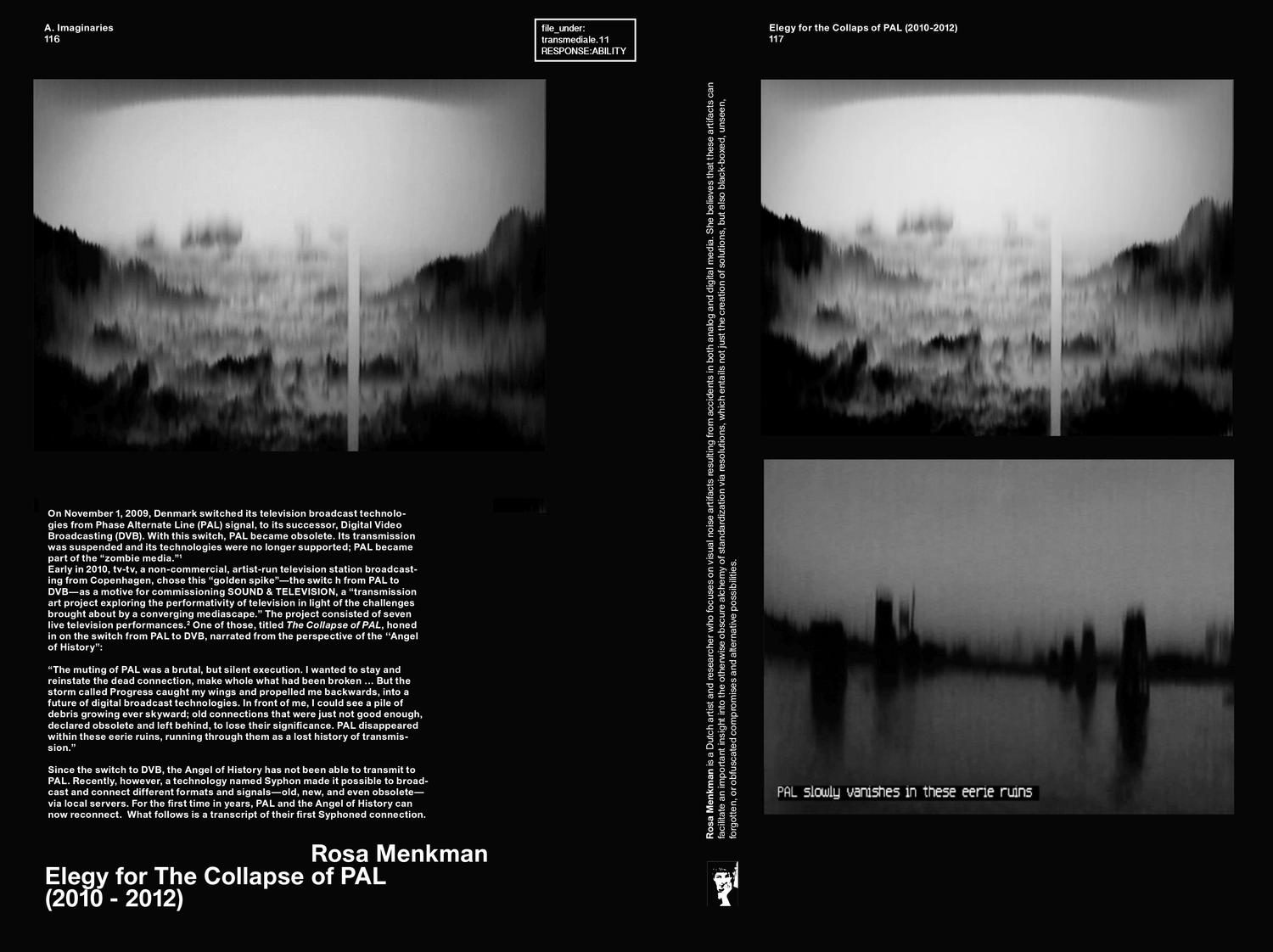
Elegy for the Collapse of PAL (2016)
A video response to a signal first I send so many years ago. It was first presented in the Transmediale reader as text, and then performed as a short 10 min solo performance at Radiator Gallery in NYC, 2017.
Its screen recorded version was shown at Vivid Projects behind a ‘shrine’ featuring blue, burned cassette tapes.
TXT published in across & beyond – A transmediale Reader on Post-digital Practices, Concepts, and Institutions Year of publication: 2016
Related participants: Ryan Bishop Jussi Parikka Kristoffer Gansing Elvia Wilk Morehshin Allahyari Daniel Rourke Jamie Allen David Gauthier Clemens Apprich Ned Rossiter Tatiana Bazzichelli Benjamin H. Bratton Florian Cramer Dieter Daniels Geoffroy de Lagasnerie Daphne Dragona Keller Easterling Olga Goriunova Louis Henderson Geraldine Juárez Olia Lialina Alessandro Ludovico Rosa Menkman Julian Oliver Danja Vasiliev Erica Scourti Cornelia Sollfrank Baruch Gottlieb Dmytri Kleiner Tiziana Terranova YoHa.
︎ pdf version.
Installation at Vivid Projects: Superseded (2017)
Photo by Antonio Roberts
A video response to a signal first I send so many years ago. It was first presented in the Transmediale reader as text, and then performed as a short 10 min solo performance at Radiator Gallery in NYC, 2017.
Its screen recorded version was shown at Vivid Projects behind a ‘shrine’ featuring blue, burned cassette tapes.
TXT published in across & beyond – A transmediale Reader on Post-digital Practices, Concepts, and Institutions Year of publication: 2016
Related participants: Ryan Bishop Jussi Parikka Kristoffer Gansing Elvia Wilk Morehshin Allahyari Daniel Rourke Jamie Allen David Gauthier Clemens Apprich Ned Rossiter Tatiana Bazzichelli Benjamin H. Bratton Florian Cramer Dieter Daniels Geoffroy de Lagasnerie Daphne Dragona Keller Easterling Olga Goriunova Louis Henderson Geraldine Juárez Olia Lialina Alessandro Ludovico Rosa Menkman Julian Oliver Danja Vasiliev Erica Scourti Cornelia Sollfrank Baruch Gottlieb Dmytri Kleiner Tiziana Terranova YoHa.
︎ pdf version.
Installation at Vivid Projects: Superseded (2017)
Photo by Antonio Roberts
Dear MR. Compression (2010)
Corrupt tangoThere is not sufficient data. Please enter data
Your file has invalid markers. Enter new markers
Your dimensions do not correspond. Change dimensions
ERROR
Goto data therapy and repair your registry
Your keyframes are missing
Your codecs are not supported
Please respect the software
Now it is too little too late [system shut down]
Dear mr compression
I write a 1000 poems to you
Is this what they call progress?
Warmly yours,
the noxious angel of history

PDF: A Guide to Databend Compression Design, 2010.
The Vernacular of File Formats Archive (16GB of data) is part of the Base collection of Stedelijk Museum Amsterdam since 2016.
A file format is an encoding system that organises data according to a particular syntax. These organisations are commonly referred to as compression algorithms. The choice of an image compression depends on its foreseen mode and place of usage: for instance, is the file meant to be printed or redistributed digitally, what kind of accuracy will be necessary and what software or hardware will render the image?
In some cases the maker chooses not to use any encoding at all, but instead to store the data as an unprocessed file. Images shot by professional photographers for instance, will be shot and stored in a RAW image file format. A RAW image file contains minimally processed data, which normally comes straight from the image sensor (for instance a CCD chip), in order to avoid any impurities (artifacts) that might be involved with image mediation, transcoding or compression.
In A Vernacular of File Formats, I subsequently compressed the source image via different compression languages and subsequently implementing a same (or similar) error into each file, to let the otherwise invisible compression language presents itself onto the surface of the image.
︎︎ flickr documentation
︎Polish translation by Bogumiła Piotrowska, Piotr Puldzian Płucienniczak, Aleksandra Pieńkosz
︎Download the PDF
In the winter of 2016, a 18,9GB digital archive of A Vernacular of File Formats, consisting of original pdfs, a catalogue of databend images, videos and documentation was part of a joint acquisition between MOTI and Stedelijk Museum Amsterdam. ︎sonification workshop
When noise becomes filter art [ or when cool becomes hot ], (2010 / edited 2017)
Glitches are hot. It is clear from what we see on MTV, Flickr, in the club or in the bookstore: while the Glitch: Designing Imperfection (Moradi, 2009) coffee table book introduced a glitch design aesthetic to the world of latte drinking designers, Kanye West used a glitch aesthetic to illustrate his broken love life.
But while glitch design fulfills an average, imperfect stereotype, a filter or commodity that echoes a medium is the message-standard, naturally, the “No Content - Just Imperfection” slogan of hot glitch design is still complimented by cool glitches.
In "The Laws of Cool", Alan Liu asks himself: What is "Cool"? He describes that cool is the ellipsis of knowing what is cool, and withholding that idea. However, as Liu writes, those who insist on asking, are definitely uncool. In an effort to answer the question that cannot be answered, and come full circle on the ellipsis, I will try to give my take on what cool glitch can be. To me, cool glitch is represented by the glitches that do not (only) focus on a static end product, but (also) on a process, a personal exploration or a narrative element (that often reflects critically on a medium). This is why cool is in a constant state of flux; it exists as an assemblage that consists of on the one hand the construction, operation and content of the apparatus (the medium) and on the other hand the work, the writer/artist, and the interpretation by the reader and/or user (the meaning). In the end, there is not one definition of cool glitch art, but many, which depend on the perspective chosen.
To make what was once cool now hot, or visa versa, and to take Designing Imperfection one step further, I hereby offer you A Vernacular of File Formats. In this PDF I describe the ways to exploit and deconstruct the organizations of file formats into new, brutalist designs.
…I am waiting for the first “Glitchs not dead“ peace of clothing in H&M. And because "fans are as bad as the ignorant", for the sake of being bad and ignorant, I will wear it!
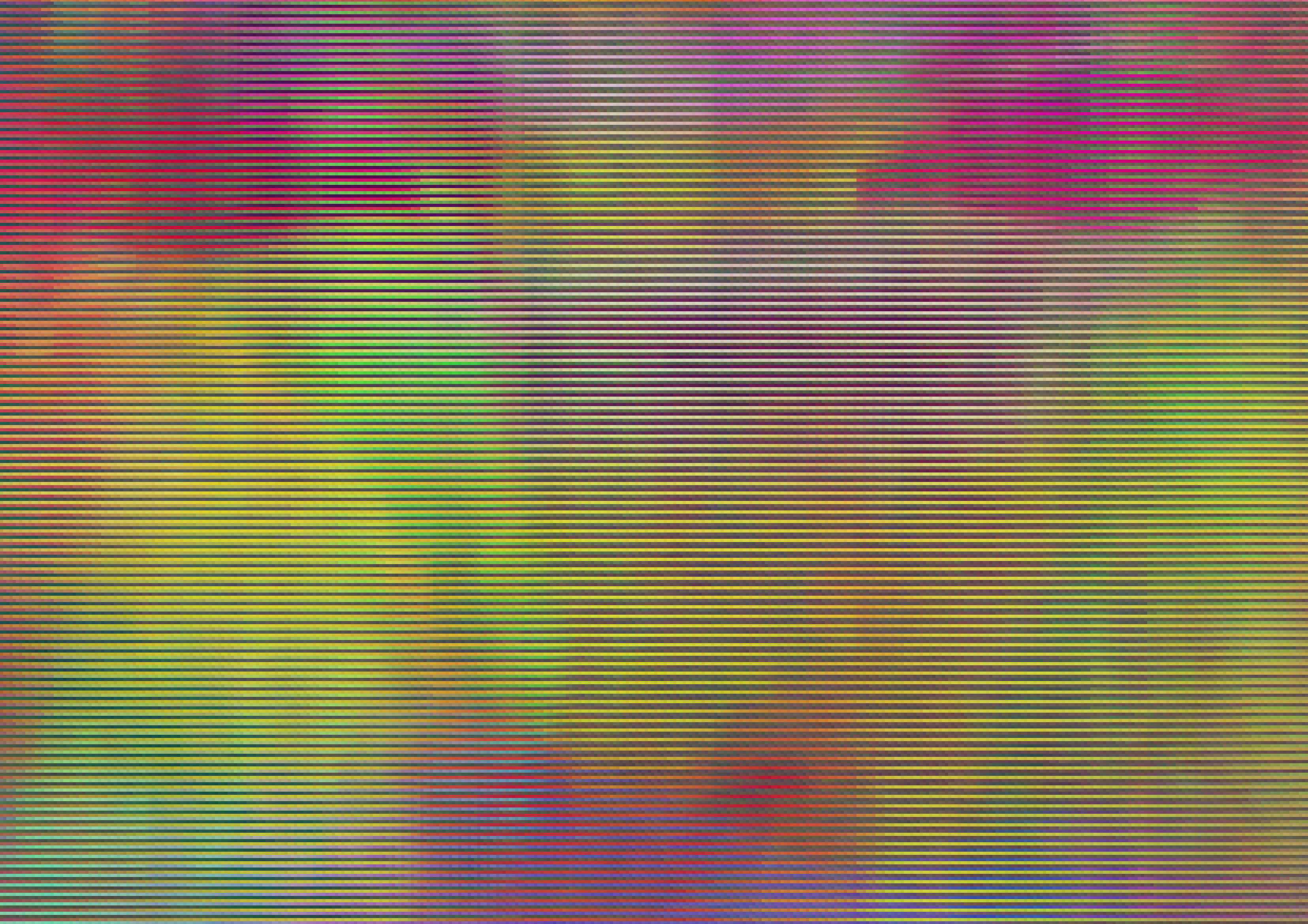

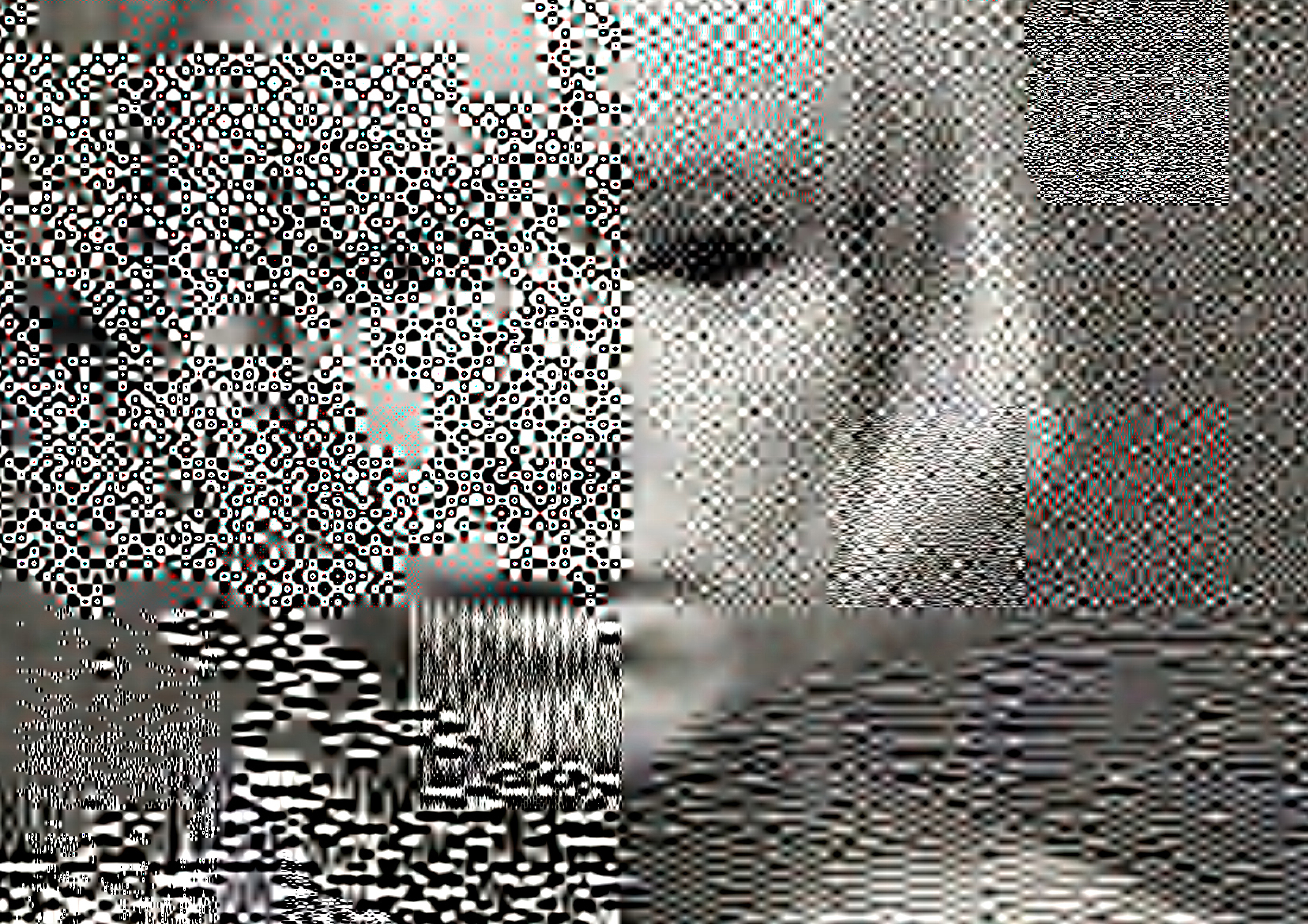
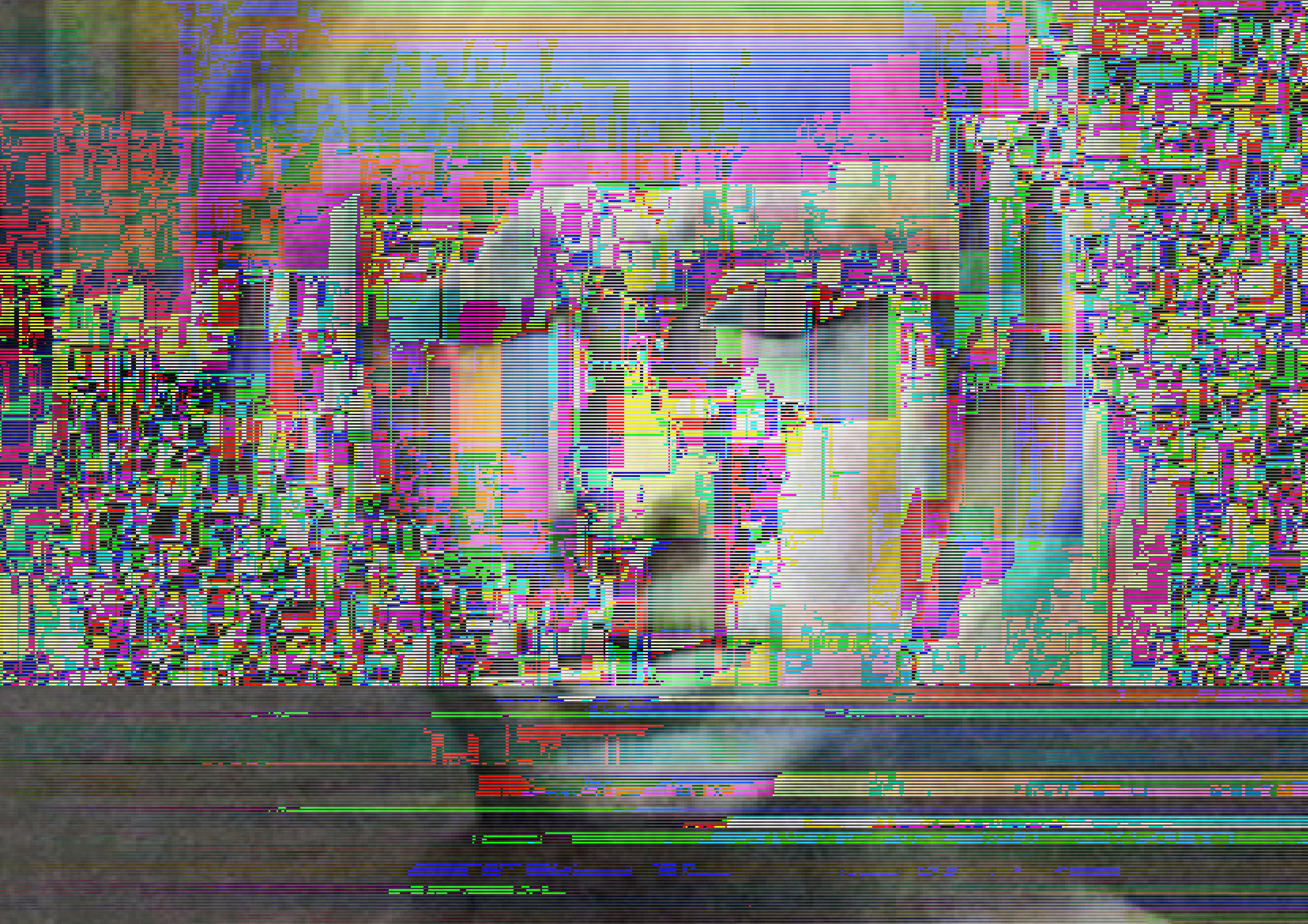
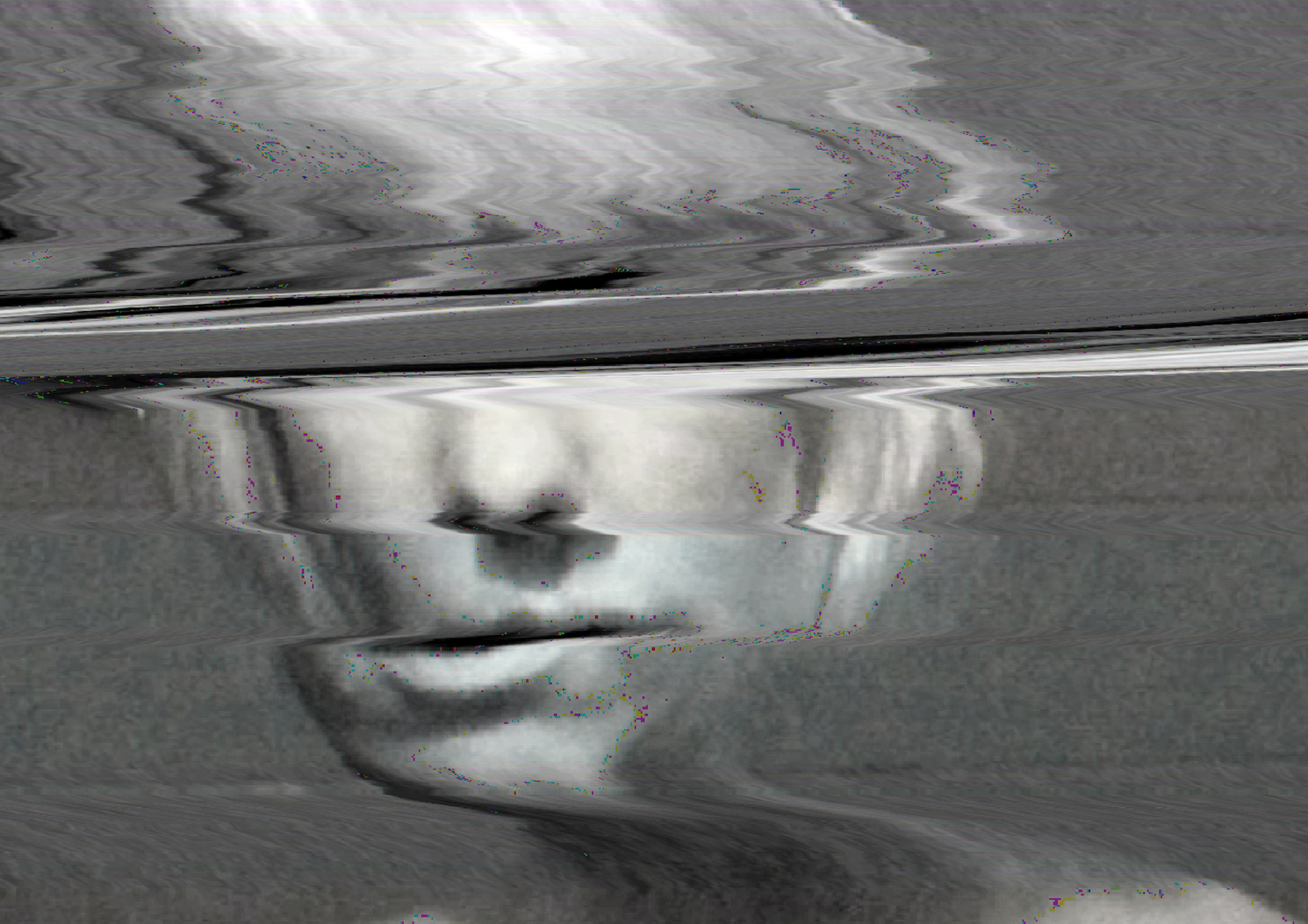
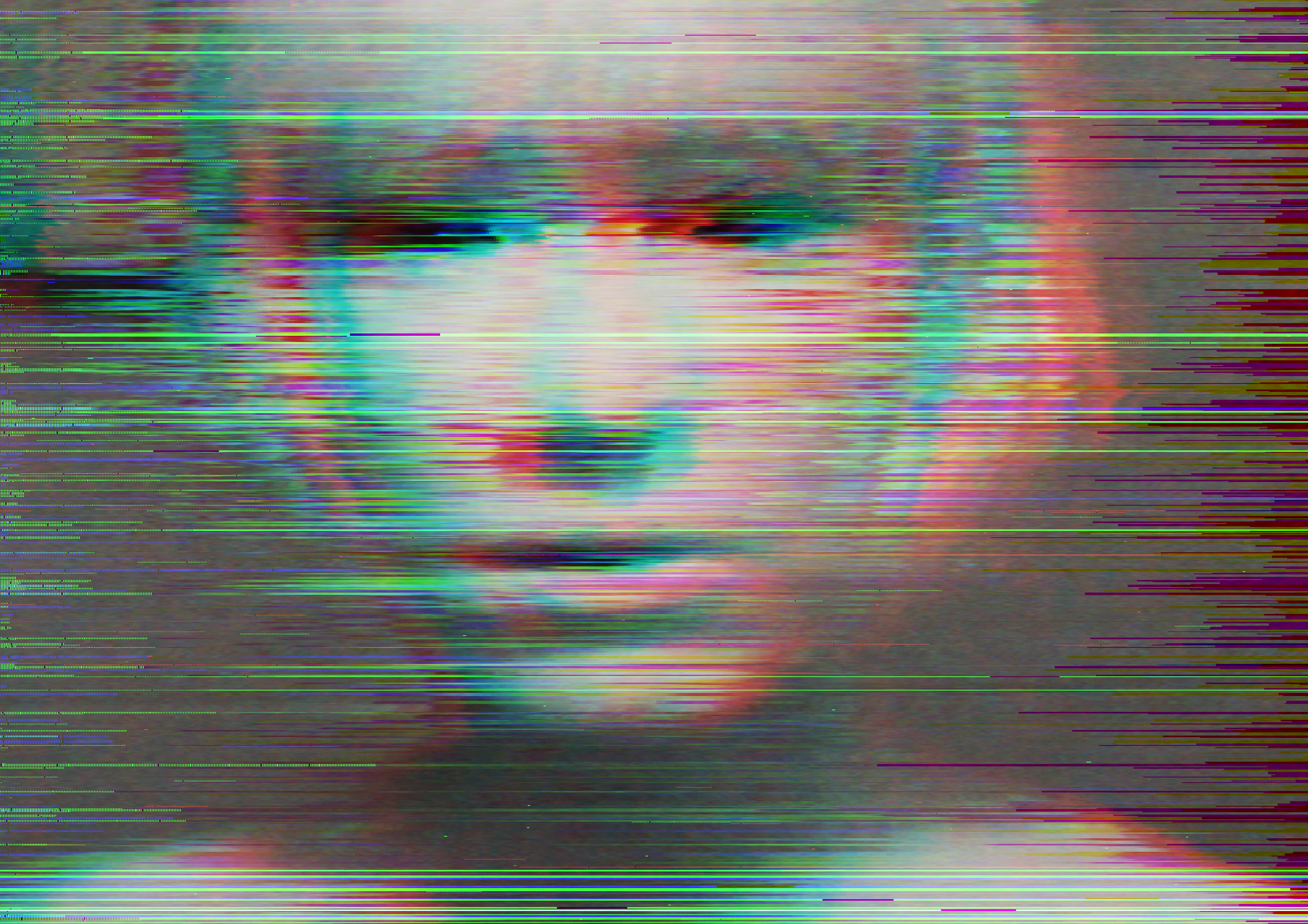


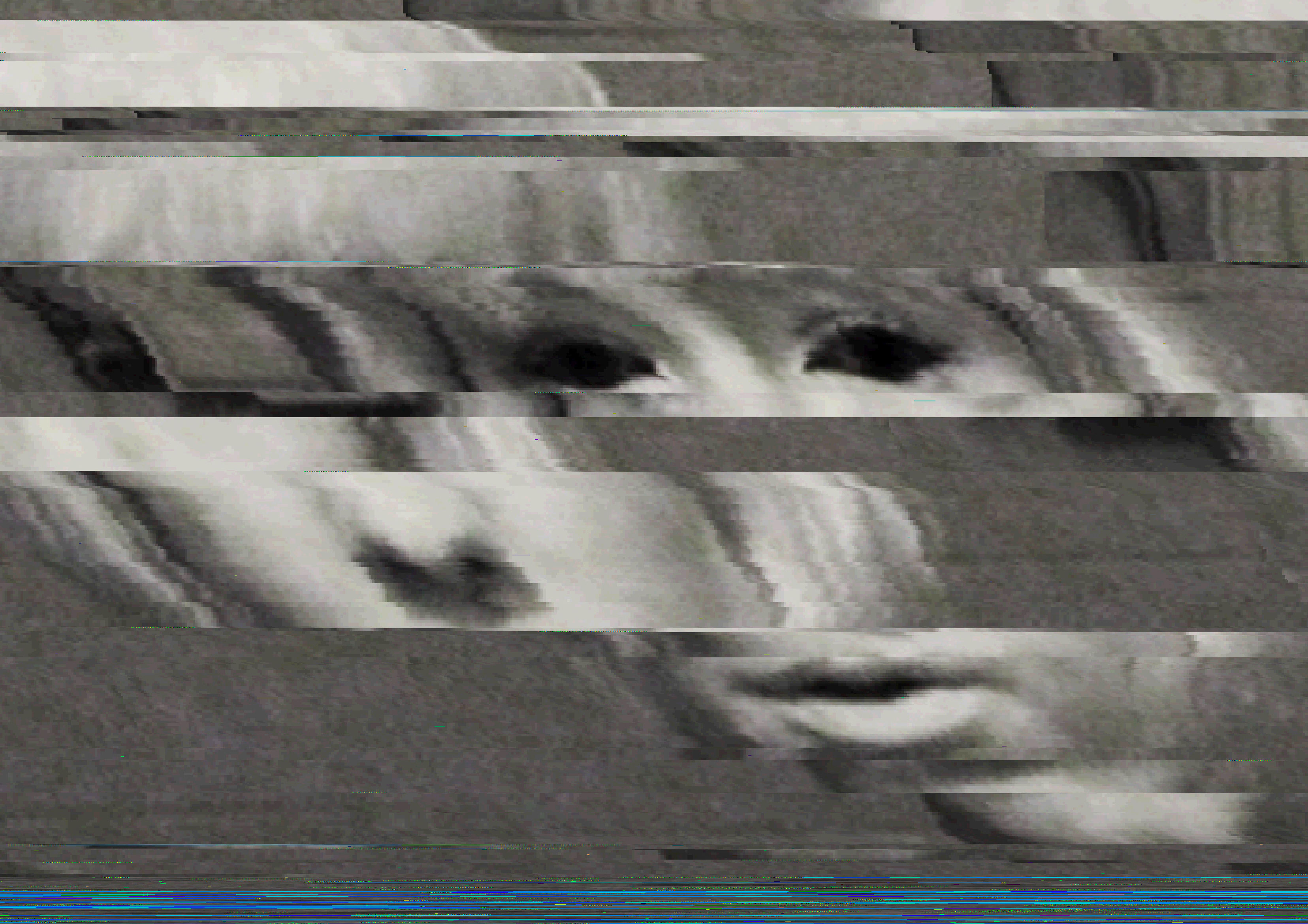
Vernacular of File Formats (2009-2010). Photoshop RAW, JPEG, JPEG 2000, PNG, BMP, Photoshop, TIFF, GIF, Targa.
Digital Prints on Dibond (matte finish).
Digital Prints on Dibond (matte finish).
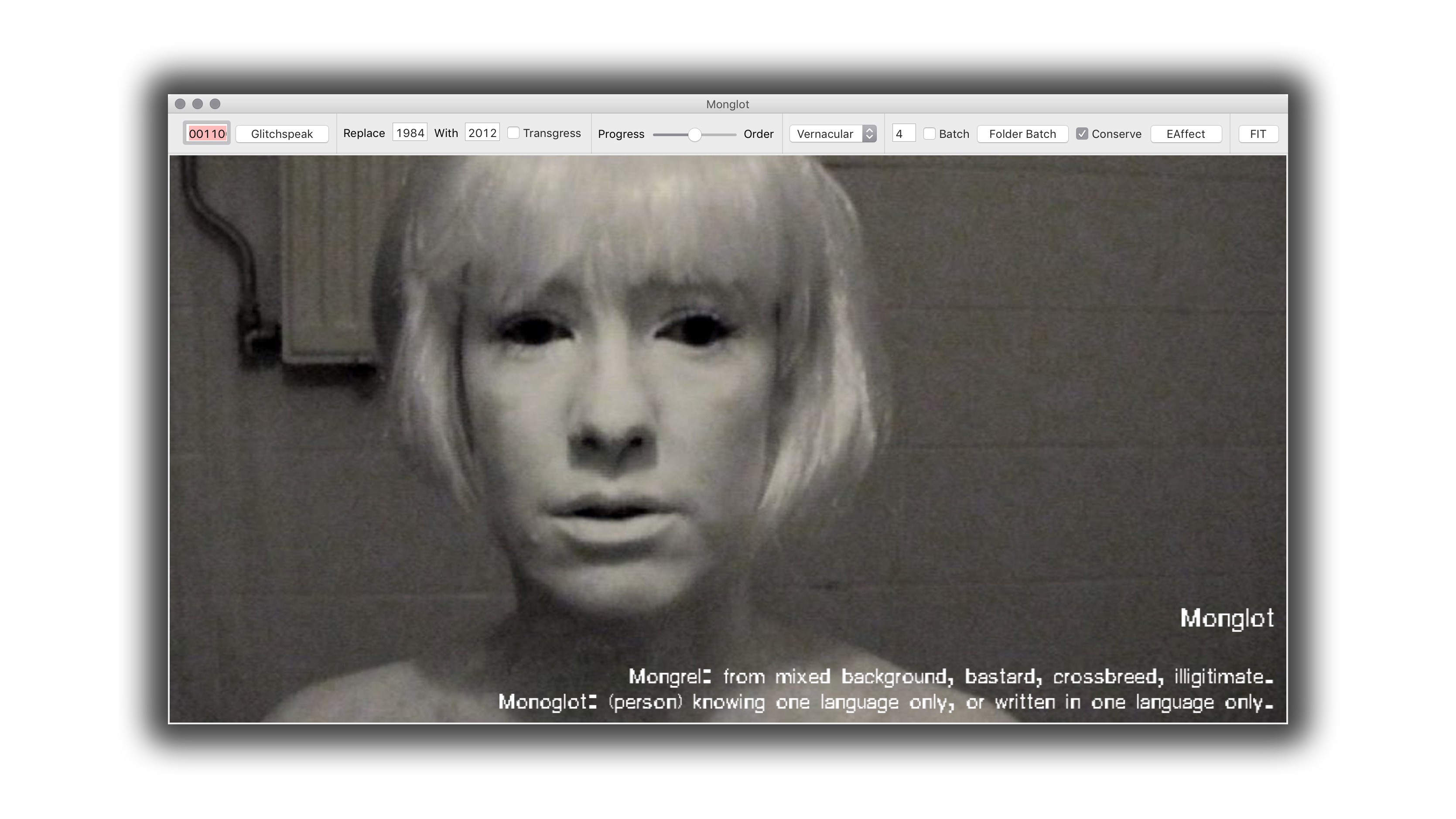
Why make (another) ‘glitch’ software
Realize that the gospel of Glitch Art also tells about new standards implemented by corruption. Not all Glitch Art is progressive or something new. The popularization and cultivation of the avant-garde of mishaps has become predestined and unavoidable. Be aware of easily reproducible glitch effects, automated by softwares and plug-ins. What is now a glitch will become a fashion.**
What I find today in the Glitch Art Flickr pool, are images opposing my original definitions of glitch - a short-lived fault in a system, inducing affect such as surprise or shock - and glitch art - work that makes us critically and radically challenge normative knowledge, values, habits and expectations. Instead, glitch art has become more and more like a style, or even a genre.
While glitch art as a style recalls Homi Bhabhas': "almost the same, but not quite" or “mimicry of digital slippage”, the ‘real’ glitch in glitch art has slowly diminished into a virtual signifier. The by popular culture commodified side of glitch has become a primal part of a new ‘glitch-economy’, which has left me to be believe I should pay more attention to this 'other side of the coin'.
This is why I decided to teach about the materiality of file formats; their different languages, slang or dialects, and how these specific qualities, rules and rhetorics can be exploited as a generative matter to create new images (a practice closely related to databending). I named the workshop "A Vernacular of File Formats" and showed different compression based artworks, while supplying the students with methods and tools to create their own format based research, and possibly art and design.
One of the troubles I ran into during the workshop was that the tools I had were not ideal for such a workshop; with every other file format we set out to manipulate we had to switch softwares, which between the different OSs' on the students computers became a real *pain*.
When I spoke to Johan Larsby (the creator of Swutits) about the lack of software, he proposed a collaboration - which is how the Monglot project started.
︎ Monglot only worked on MacOS 10.5 and 10.6. In 2016 KernelEquinox opensourced a program inspired by Monglot for Windows -> ︎
︎ More about monglot and its strange interface here
︎ Download Monglot, code, Monglot master
︎ Monglot only worked on MacOS 10.5 and 10.6. In 2016 KernelEquinox opensourced a program inspired by Monglot for Windows -> ︎
︎ More about monglot and its strange interface here
︎ Download Monglot, code, Monglot master
Monglot (2011)
A Glitch Software collaboration with Johan Larsby (SE) 2011.
Of Mimicry and Glitch Art: The Ambivalence of a 'Colonial' Glitch Art discourse
(order and progress || chaos and destruction)
The name Monglot is a degeneration of the terms Mongrel and Monoglot (the term also references Homi Bhabha's "forked tongue" of colonialism and something I would like to refer to as Glitch Speak).
*/
Mongrel: the offspring of a variety of species, of mixed background, bastard, or imperfect crossbreed
Mongrel: the offspring of a variety of species, of mixed background, bastard, or imperfect crossbreed
Monoglot: knowing only one language; monolingual.
*/
*/
Generally, glitch aesthetics or compression artifacts such as fragmentation, grain, ghosting, heterodynes, interlacing, jitter, jaggies, (…) posterization, pixelating, quantization error, ringing, staircase noise, scan lines (…) come to the surface because of an accidental flaw in the image data, which shows on the surface of the image itself.
The Monglot software generates glitches. It does this by adding a random or chosen error to the image-data, which is encoded via a compression language of choice. This error than sits on the surface of the image. In doing so Monglot mashes two languages together: the language of the compression and the visual image itself.
While for most glitch softwares the final product is the focus, Monglot focusses on the /experimental/, generative part of glitching.
By comparing different file formats and their behaviors, Monglot can be used to learn and research about file formats.
Monglot aims to show the ambivalence (cool vs. hot) and the double articulation (encoding vs. image data) of (file format-based) Glitch Art.
The user of Monglot is able to repeat an error by clicking ‘Glitchspeak’ or chose a particular error on the ‘Replace’ function of the software. This is how Monglot exists as a compromise in-between cool and hot.
The user of Monglot is able to repeat an error by clicking ‘Glitchspeak’ or chose a particular error on the ‘Replace’ function of the software. This is how Monglot exists as a compromise in-between cool and hot.







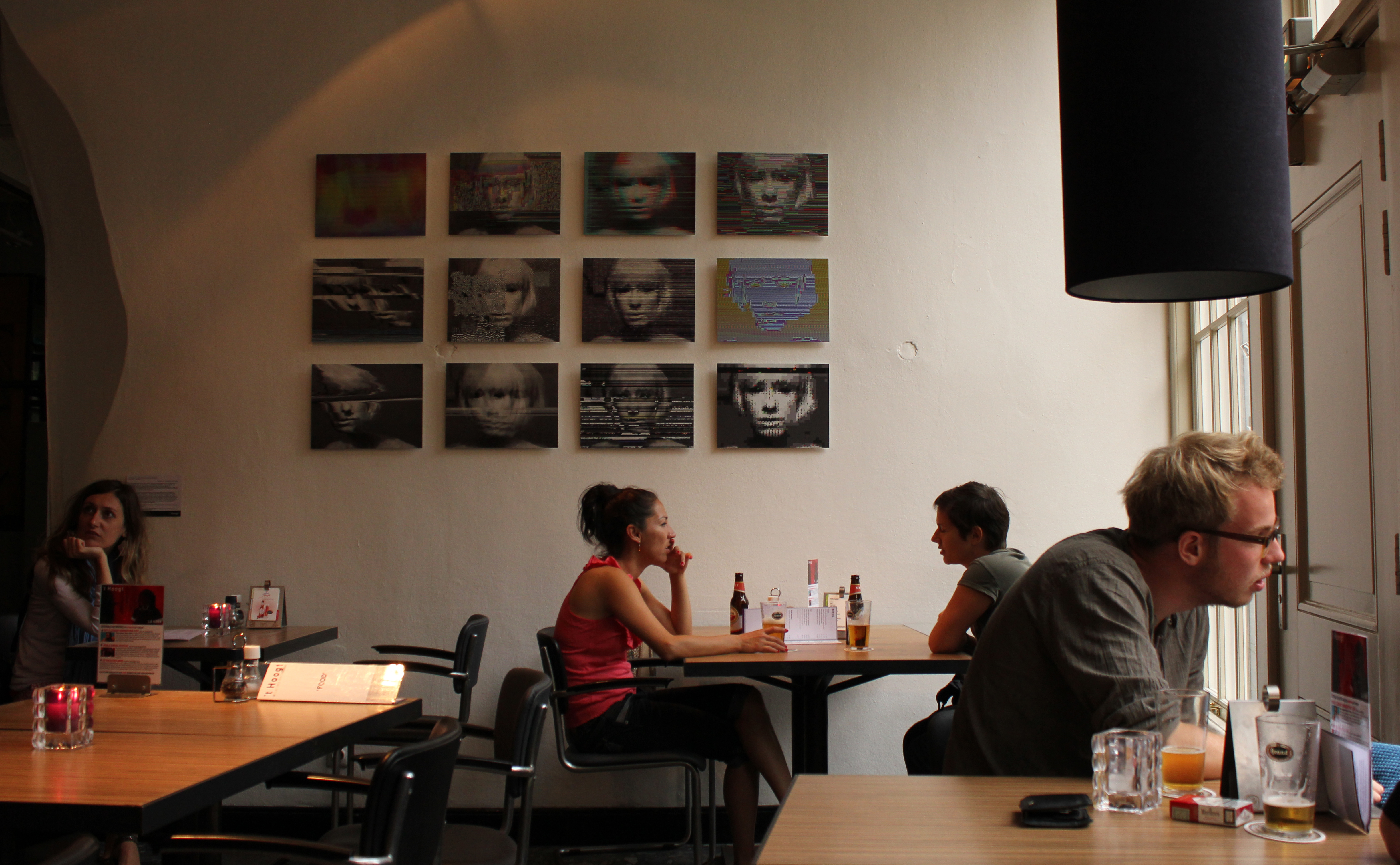 Vernacular of File Formats ft. Kim Asendorfs Extrafile. Expositie for Re:Visie NFF augustus t/m 30 september 2011.
Vernacular of File Formats ft. Kim Asendorfs Extrafile. Expositie for Re:Visie NFF augustus t/m 30 september 2011.
